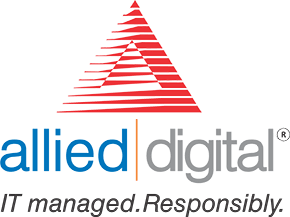Strategies for Growth: Measuring and Increasing Productivity in an Organization

An organization’s performance and growth are highly dependent on the productivity of its workforce.
Increased productivity is required in both internal and external-facing roles across employees and departments of an organization. This includes Sales, Service Delivery, Product Development, HR, Finance, Marketing, and other internal support functions. Higher productivity automatically leads to increased sales, higher profitability, accelerated growth, improved employee satisfaction, and an enhanced corporate image.
However, it is essential to measure both individual productivity as well as unit and departmental productivity. This enables tracking and improvement to align with the organization’s objectives.
Additionally, benchmarking our productivity against industry standards is crucial, allowing us to identify opportunities for surpassing those benchmarks. Increased productivity in product and service delivery should lead to higher customer satisfaction and improved profitability.
Enhanced productivity in sales would result in sustained acquisition of large new customers, driving the organization’s long-term strategic growth.
An increase in productivity growth directly contributes to a stronger brand image and reinforces the organization's reputation as a value-driven partner for its customers.
1.0 Measuring Productivity
It is important to measure and track the productivity of both employees and the units to which they belong while aligning with the organization's vision and goals—both short-term and long-term. This applies whether the employee is in an internal organizational support role or an external customer-facing position.
For example, if the organization aims to achieve 10x growth over the next 10 years, its revenue must increase by 25% to 30% annually. This requires corresponding productivity improvements in sales performance per employee and sales managers. These expectations should be clearly communicated and tracked on a quarterly and annual basis.
Similarly, every employee or project unit involved in customer-facing roles must meet productivity expectations, whether in L1, L2, or L3 ticket resolution support, or software development.
Managers should ensure their teams meet productivity targets, ultimately improving customer satisfaction scores. They are accountable for the productivity of their teams and must not shift responsibility elsewhere within the organization. Since they are responsible for team composition, they must also ensure team members meet productivity expectations.
Similarly, internal organizational employees in HR, Finance, or other support functions must consistently meet and improve their productivity targets.
A holistic, integrated approach is required, not just in measuring productivity but also in improving it across the organization. This is because sales, delivery, and internal support functions are interdependent in achieving overall organizational goals.
To drive productivity, increments, commissions, and promotions should be aligned with employees’ and managers’ performance against set productivity targets.
2.0 Increasing Productivity
An organization should continuously strive to increase productivity at individual, team, and organizational levels.
Organizational productivity, performance, growth, and profitability can be enhanced through the following initiatives:
- Timely Hiring of Competent Employees: Ensuring that the right employees are hired at the right time, both for the organization's structure and for newly acquired projects.
- Proactive Hiring Strategy: Recruiting interns, freshers, and experienced employees with a long-term perspective to support sales and delivery growth. This ensures readiness for future projects in a planned and risk-mitigated manner.
- Robust Training Programs:
- A strong one- to two-month Induction Training Program (IITP) to equip employees with fundamental industry-relevant software and technology skills.
- A yearly one- to two-week Continuous Education Training Program for skill development and certification in emerging industry-related skills. These initiatives ensure a high-performing workforce that remains ahead of industry trends.
- Acquisition of Relevant Tools and Technologies: Investing in infrastructure, management tools, hiring tools, and attendance management systems to enhance both productivity measurement and performance delivery.
- Automation of Routine Activities: Reducing manual interventions through automation tools (e.g., financial trackers, sales trackers, attendance management systems) to provide real-time productivity insights at individual, team, and organizational levels.
- Monthly Productivity Tracking & Feedback: Implementing in-house tracking tools to measure and communicate productivity performance. Non-compliance with expectations should be addressed immediately, with support provided for improvement.
- Dedicated Quality and Performance Improvement Team: Establishing a team led by an experienced Performance and Quality Improvement Manager to track industry benchmarks, best practices, and drive productivity improvements across all levels. This team should also oversee PCMM (People Capability Maturity Model) and SEI-CMMI (Capability Maturity Model Integration) processes.
- Innovation-Led Productivity Initiatives: Establishing a dedicated innovation team within firm to drive productivity through innovation in MSI, Smart Cities, Enterprise Infrastructure Management, and Software Solution Services.
- Leveraging Industry Innovations: Following the examples of TCS, Infosys, and Accenture, organizations must invest in innovation, in-house development of productivity tools, and automation while also collaborating with startups in the evolving tech ecosystem.
3.0 Balanced Scorecard Approach
A Balanced Scorecard (BSC) is a strategic management tool that helps organizations measure performance and improve results.
A BSC translates an organization’s purpose, mission, and vision into measurable objectives and performance indicators. It enables organizations to:
- Align projects and initiatives with strategic objectives.
- Define key performance indicators (KPIs).
- Design performance reports and dashboards.
- Ensure organizational structure supports strategic objectives.
A Balanced Scorecard approach at the individual, team, and organizational levels helps in:
- Establishing and monitoring lead indicators related to productivity.
- Measuring lag indicators (impact/outcome) to evaluate effectiveness.
For example, in Financial Performance Monitoring, one of the productivity parameters in the BSC could be sales productivity:
- Lead indicators: Number of prospect calls, physical meetings, and bid proposals submitted.
- Lag indicators: Number of deals won, deal value (TCV), revenue (ACV), and margin performance against targets.
Similarly, in Process Effectiveness, delivery excellence metrics serve as outcome measures of individual and team productivity.
Senior management should engage in discussions on these productivity measures and ensure their implementation to align with vision, mission, values, and goals.
